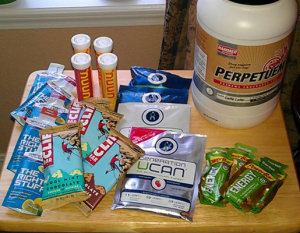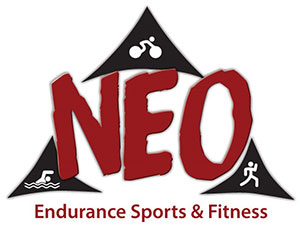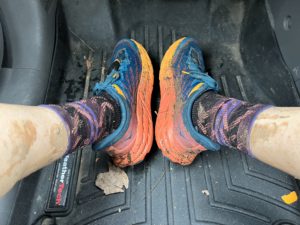
Race nutrition is the topic for our Friday Feast posts for this month. We can also call it training nutrition, since hopefully what you use in your training is what you will use in your race.
This is a huge and at times complicated topic. What I will try to do in these posts during the month of May is give you guidelines and ideas to try so that you can find what works for you.
The latter part of the last sentence is the most important part – what works for you.
Many factors come into play when determining what you will eat during your event. Hydration is also critical, and some calories can be consumed in liquid fashion, but we’ll just talk the caloric replenishment right now.
Factors to keep in mind:
1) Duration of the event
2) Your effort level during the event
3) Lean body mass
4) What you can tolerate
Duration of the event. The longer the event, the more calories you will need. Our muscles store anywhere from about 1500-2000 calories in muscle glycogen, which, can actually last a while if we’ve trained our bodies to use fat more efficiently. In events two hours or less, depending on the intensity and your body’s efficiency, you might be able to get away with not taking in any calories, or maybe just a few.
In events that last 3 or more hours, having a plan for caloric consumption will most likely be critical to your performance.
Your effort level. The more intense you race, the more calories you will burn, and, depending on your metabolic efficiency, the greater percentage of carbohydrate vs. fat you will burn.
One thing to keep in mind is that when you go hard, blood is diverted to the muscles to keep them going, so less blood is available to aid in digestion.
Lean body mass. If you have more muscle, then you’ll likely need more calories to keep them going. A 180lb male triathlete will probably need more calories to keep going than a 135lb female at the same relative intensity.
What you can tolerate. We all know those people with the iron stomach. They can eat anything at any intensity and be fine. Then there are those who have to carefully figure out what they can eat and when. Taking the wrong brand of gel could be a gut-wrenching disaster.
Testing different products (and even “non-products” aka real food) during your training and race simulation workouts will help you dial in your nutrition plan.
Next week I’ll talk about different products on the market and “non-products” to help you make more informed decisions to dial in the right nutrition plan for you.




